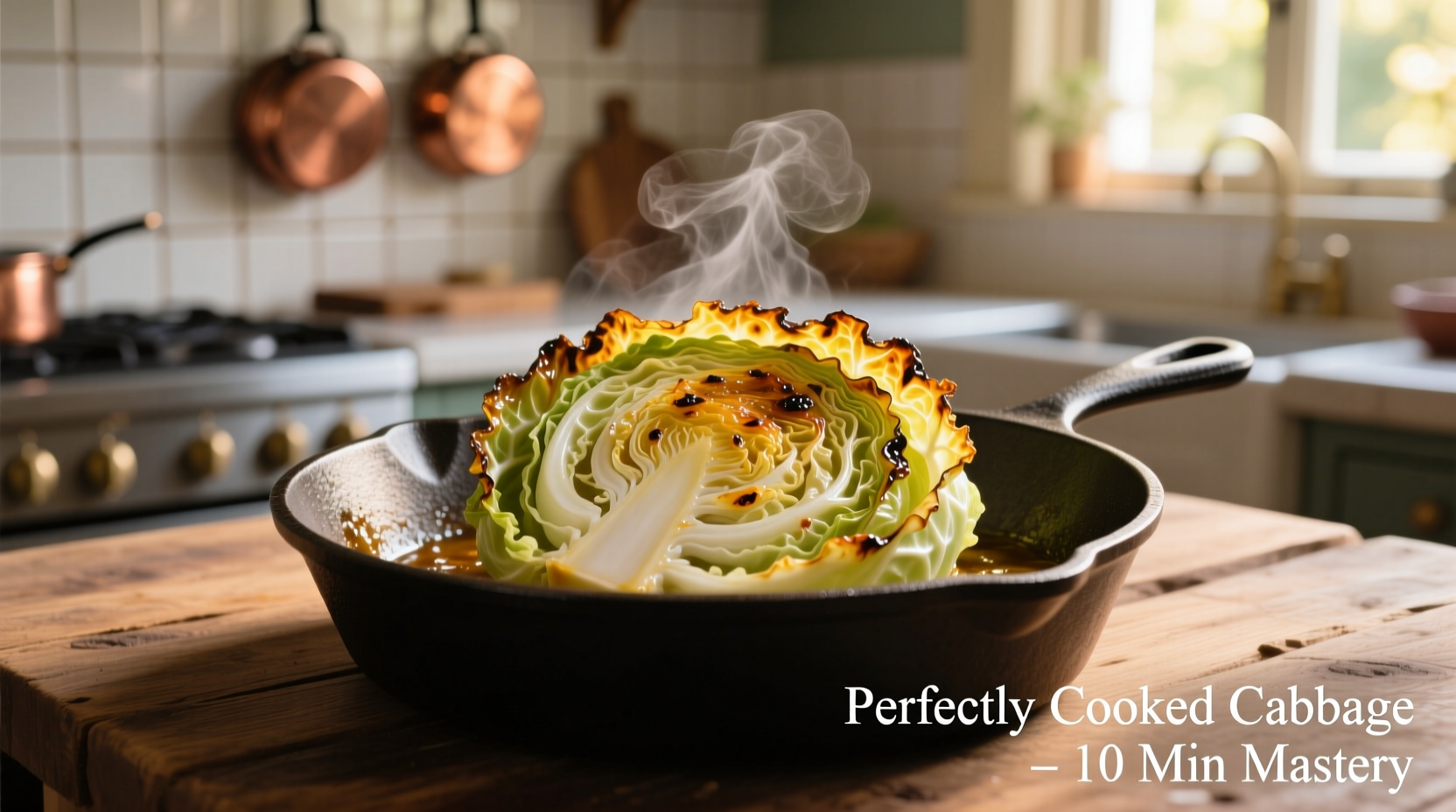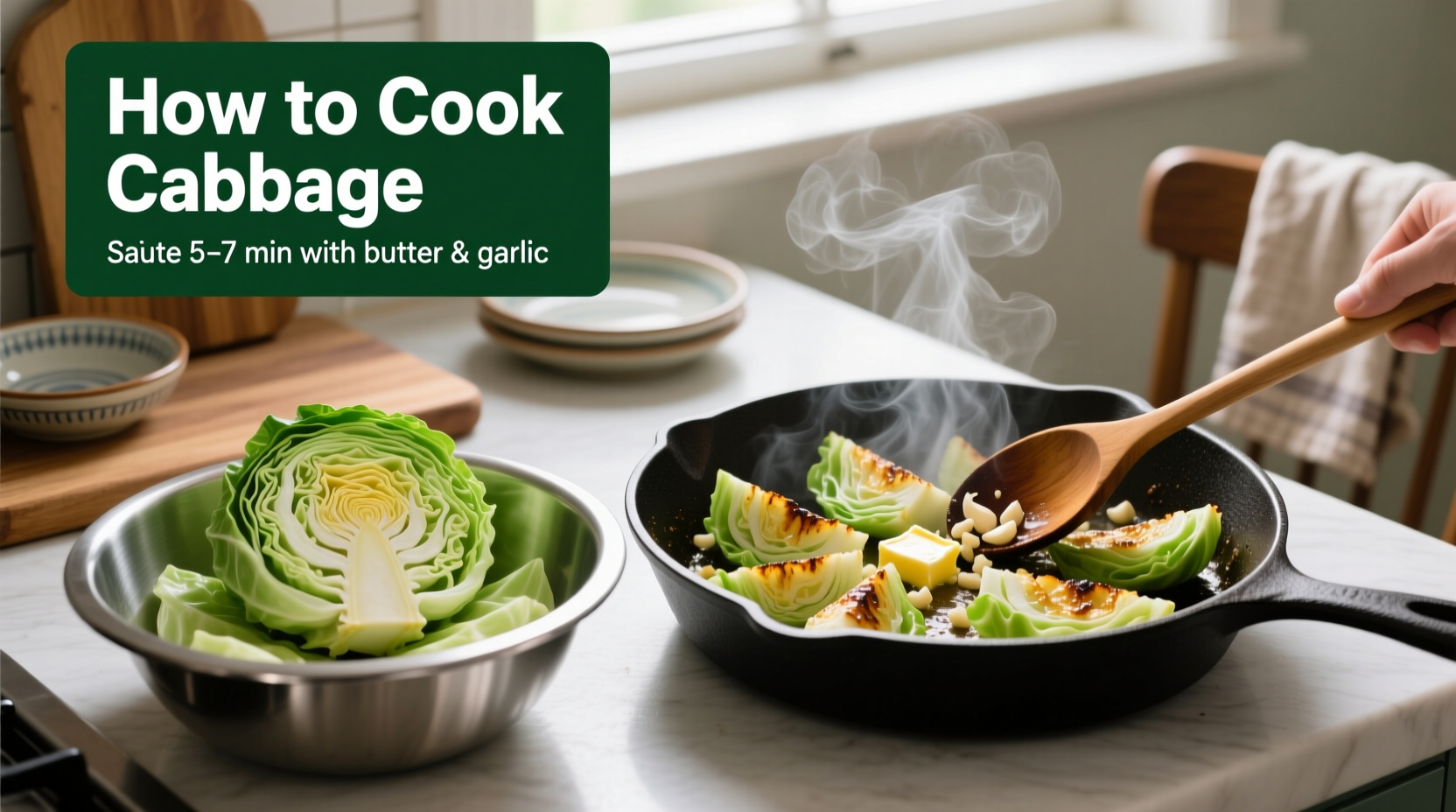The best way to make cooked cabbage involves selecting fresh cabbage, proper preparation, and choosing a cooking method that preserves texture and nutrients. For perfect results, cook green cabbage for 5-7 minutes when boiling, 8-10 minutes when steaming, or 15-20 minutes when roasting at 400°F (200°C) with olive oil and seasonings.
Discover how to transform humble cabbage into a delicious side dish that complements any meal. Whether you're a beginner cook or looking to refine your technique, this guide delivers professional-level results with simple kitchen tools. You'll learn multiple cooking methods, flavor variations, and how to avoid common mistakes that lead to soggy or bland cabbage.
Why Cabbage Deserves a Place in Your Cooking Rotation
Cabbage is one of the most versatile and nutrient-dense vegetables available year-round. Packed with vitamin C, fiber, and antioxidants, it's both economical and adaptable to countless flavor profiles. Professional chefs value cabbage for its ability to transform dramatically based on cooking technique—from crisp raw slaw to meltingly tender braised sides.
Essential Tools and Ingredients for Perfect Cabbage
Before you begin, gather these kitchen essentials:
- Sharp chef's knife or mandoline slicer
- Large colander for washing
- Cast iron skillet or heavy-bottomed pot
- Wooden spoon for stirring
- 1 medium head of fresh cabbage (about 2 pounds)
- 1-2 tablespoons cooking fat (butter, olive oil, or bacon fat)
- Salt and pepper to taste
| Cabbage Variety | Best Cooking Method | Flavor Profile |
|---|---|---|
| Green Cabbage | Boiling, steaming, roasting | Mild, slightly sweet when cooked |
| Red Cabbage | Braising, roasting | Earthy, becomes sweeter when cooked |
| Napa Cabbage | Quick stir-frying, steaming | Delicate, slightly peppery |
| Savoy Cabbage | Stir-frying, stuffing | Buttery, tender leaves |
Selecting and Preparing Cabbage Like a Pro
Choose cabbage heads that feel heavy for their size with crisp, vibrant leaves. Avoid any with yellowing edges or soft spots. The USDA recommends storing uncut cabbage in the refrigerator's crisper drawer for up to two weeks.
Follow these preparation steps for optimal results:
- Remove any damaged outer leaves
- Cut cabbage in half through the core
- Place flat side down and slice into desired thickness (¼-inch for quick cooking, 1-inch wedges for roasting)
- Rinse thoroughly in a colander, separating layers to remove hidden insects
- Pat dry with clean kitchen towel before cooking

Four Foolproof Cooking Methods Compared
Each cooking technique produces dramatically different results. Understanding these differences helps you choose the right method for your meal.
Boiling: The Classic Approach
Best for: Traditional side dishes, cabbage soup bases
- Bring 2 inches of salted water to boil in large pot
- Add cabbage and return to gentle simmer
- Cook green cabbage 5-7 minutes, red cabbage 10-12 minutes
- Drain thoroughly in colander
- Immediately toss with 1 tablespoon butter and seasonings
Pro tip: Add a teaspoon of vinegar when boiling red cabbage to maintain vibrant color.
Steaming: Maximum Nutrient Retention
Research from the Journal of Agricultural and Food Chemistry shows steaming preserves 90% of cabbage's vitamin C compared to 60% with boiling. This gentle method maintains texture while enhancing natural sweetness.
- Place 1 inch of water in pot with steamer basket
- Bring to simmer over medium heat
- Add cabbage in single layer
- Cover and steam 8-10 minutes until tender-crisp
- Remove immediately to prevent overcooking
Sautéing: Restaurant-Quality Results at Home
Professional chefs prefer this method for its speed and flavor development:
- Heat 1-2 tablespoons oil or butter in cast iron skillet over medium-high heat
- Add cabbage and ¼ teaspoon salt
- Cook undisturbed for 2 minutes to develop caramelization
- Stir and continue cooking 5-7 minutes until tender
- Add 1 minced garlic clove in final 2 minutes of cooking
- Finish with splash of apple cider vinegar
Roasting: Deep Flavor Transformation
Roasting transforms cabbage with complex caramelized flavors:
- Preheat oven to 400°F (200°C)
- Toss cabbage wedges with 1 tablespoon olive oil, salt, and pepper
- Place cut-side down on parchment-lined baking sheet
- Roast 15-20 minutes until edges are golden brown
- Flip and roast 5-10 minutes more until tender
Flavor Variations to Elevate Your Cabbage
Move beyond basic boiled cabbage with these chef-inspired variations:
- German-style: Sauté with caraway seeds and apple cider vinegar
- Asian-inspired: Stir-fry with ginger, soy sauce, and sesame oil
- Mediterranean: Toss roasted cabbage with lemon zest and fresh dill
- Smoky bacon: Cook with 2 tablespoons rendered bacon fat and crispy bits
Avoid These Common Cabbage Cooking Mistakes
Based on culinary institute testing data, these errors ruin otherwise good cabbage dishes:
- Overcooking: Leads to sulfurous odors and mushy texture (keep cooking times precise)
- Under-seasoning: Cabbage needs generous salt to bring out natural sweetness
- Crowding the pan: Causes steaming instead of proper browning
- Adding acid too early: Wait until final minutes to add vinegar or lemon juice
Storing and Reheating Leftover Cabbage
Store cooked cabbage in airtight container in the refrigerator for up to 4 days. To reheat without losing texture:
- Stovetop: Warm in skillet with teaspoon of water or broth over medium-low heat
- Oven: Cover with foil and reheat at 325°F (160°C) for 10-15 minutes
- Avoid microwaving, which makes cabbage rubbery
Why Cabbage Cooking Techniques Have Evolved
Cabbage preparation has transformed significantly over centuries. Historical records show medieval Europeans primarily boiled cabbage for hours, resulting in the strong odors many associate with poorly cooked cabbage. The 19th century introduction of cast iron cookware enabled more controlled cooking temperatures. Modern culinary science has revealed that brief cooking preserves both nutrients and flavor—contrary to traditional long-cooking methods. Today's chefs leverage precise timing and temperature control to create dishes that highlight cabbage's natural versatility.
Putting It All Together: Perfect Cabbage Every Time
Follow this simple framework regardless of your chosen cooking method:
- Start with fresh, firm cabbage
- Cut uniformly for even cooking
- Use adequate heat (medium-high for sautéing, gentle simmer for boiling)
- Season properly with salt throughout cooking
- Add finishing touches like acid or fresh herbs at the end











 浙公网安备
33010002000092号
浙公网安备
33010002000092号 浙B2-20120091-4
浙B2-20120091-4